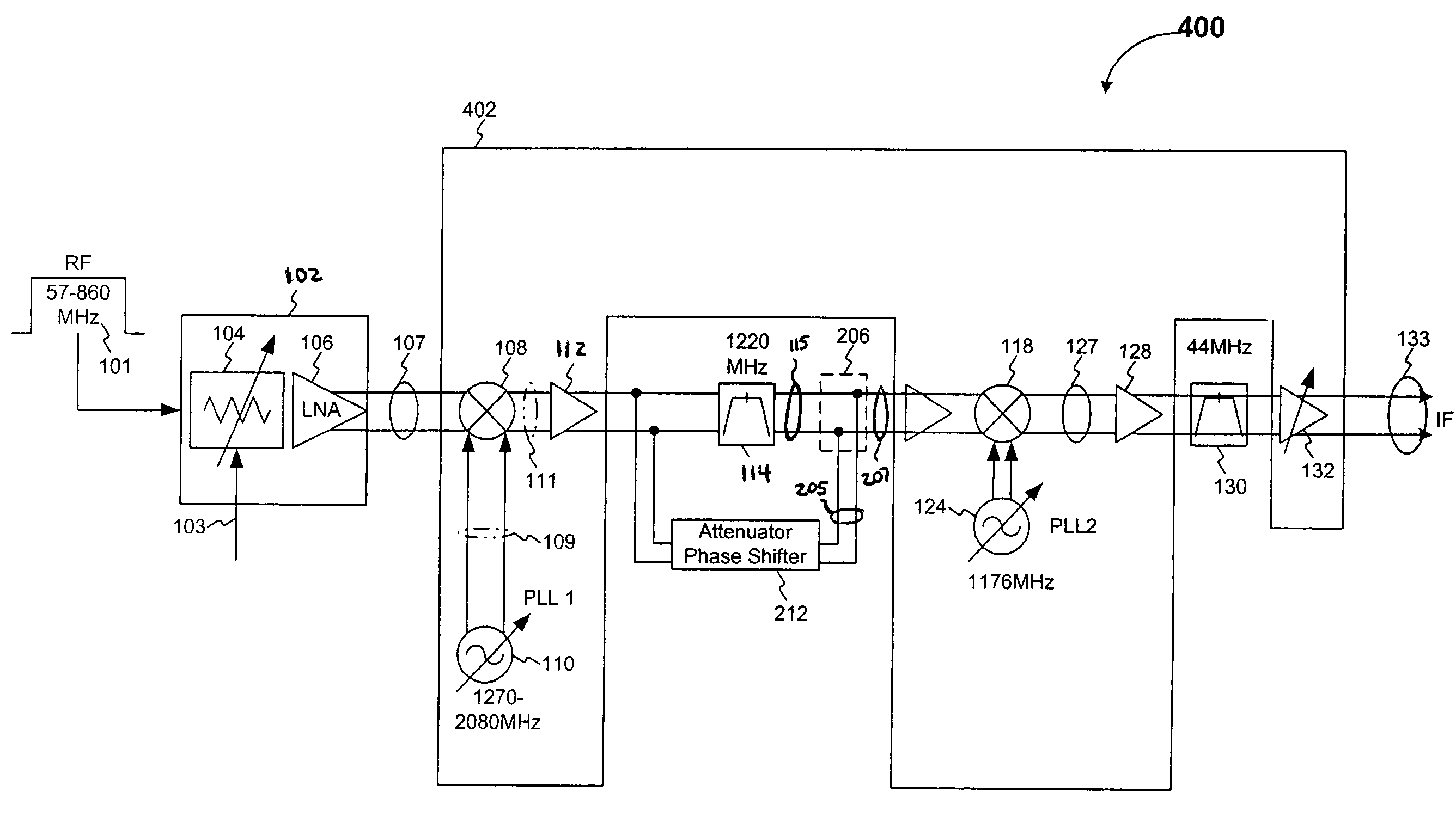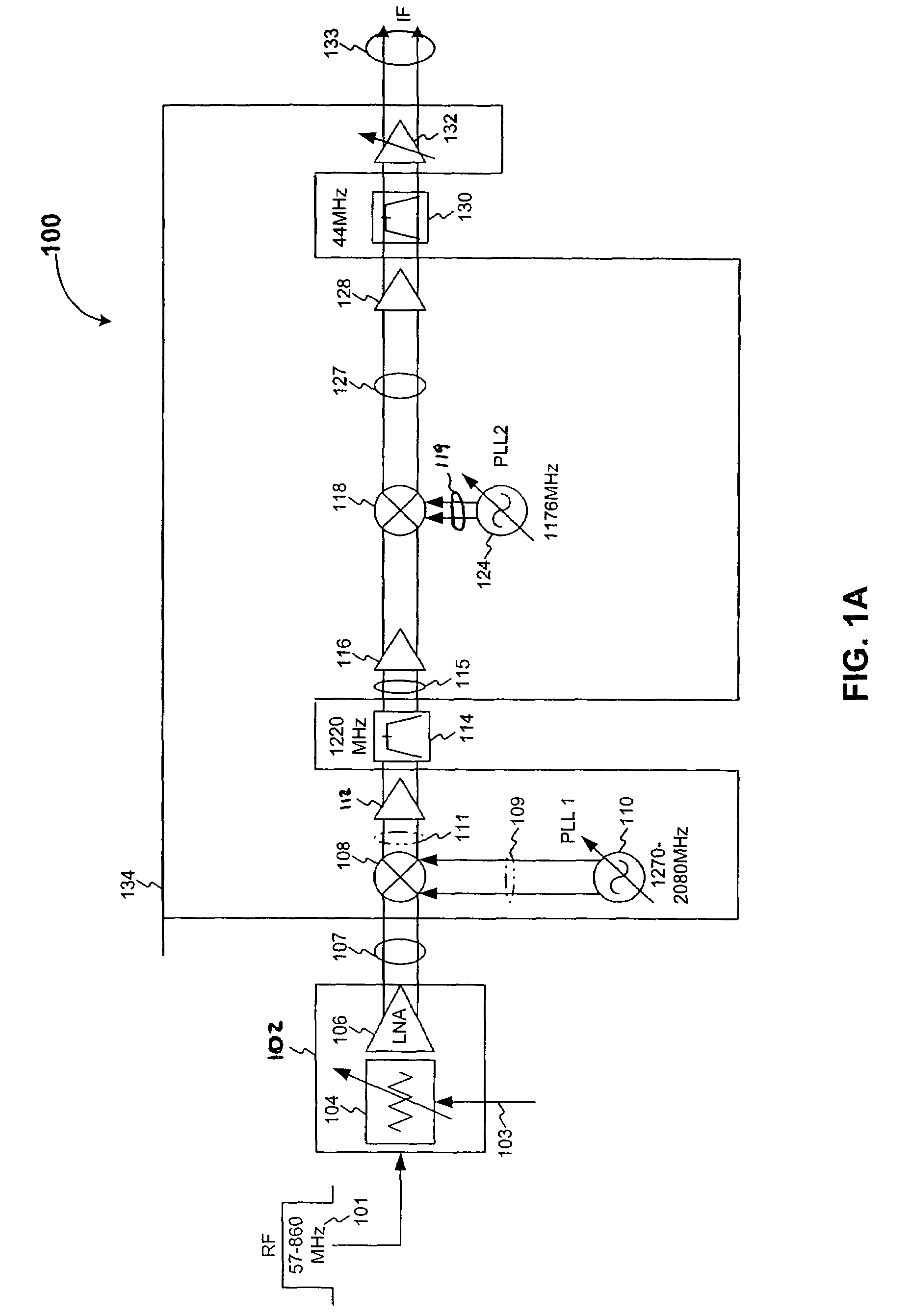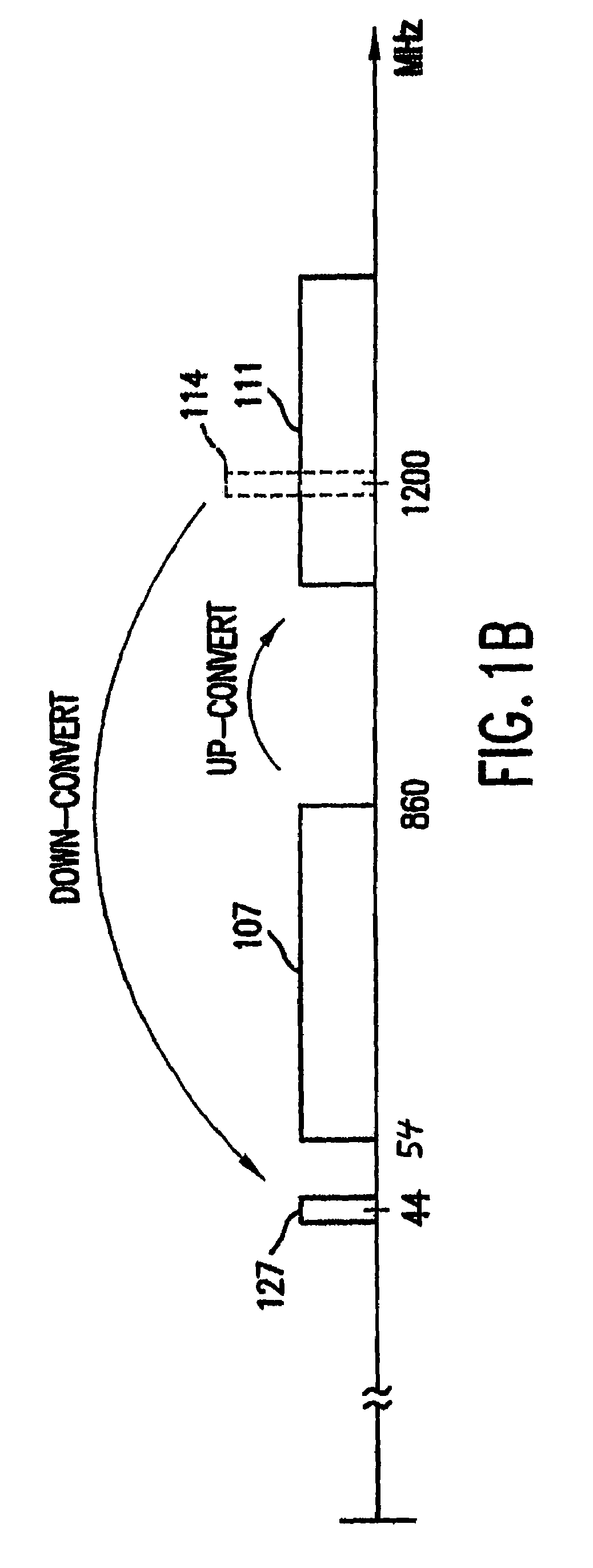Apparatus and method for feed-forward image rejection in a dual conversion receiver
a dual-conversion receiver and image technology, applied in the direction of color television details, television system details, television systems, etc., can solve problems such as interference with down-conversion and reception
- Summary
- Abstract
- Description
- Claims
- Application Information
AI Technical Summary
Benefits of technology
Problems solved by technology
Method used
Image
Examples
second embodiment
[0046]FIG. 5B illustrates the feed forward image cancellation circuits 212a and 212b. This embodiment replaces the capacitors C1 and C2 in FIG. 5A with inductors L1 and L2. This embodiment may be necessary for a given SAW filter phase response to produce the desired image cancellation.
third embodiment
[0047]FIG. 5C illustrates the feed forward image cancellation circuits 212a and 212b. A single differential inductor L is employed instead of two shunted inductors. A similar embodiment may be employed with the shunted capacitors of FIG. 5A.
fourth embodiment
[0048]FIG. 6 illustrates the tuner 400 having the feed forward image cancellation circuits 212a and 212b. In FIG. 6, each image cancellation circuit 212 includes a first resistor R1, a second resistor R2, a capacitor C1, and an inductor L1. The capacitor C1 is between ground and a terminal that inter-connects the series resistors R1 and R2. This second-order circuit allows for more phase shift in the cancellation circuits. This might be required when the SAW phase shift is too small.
[0049]The component values for the image cancellation circuits 212a and 212b are selected so as to reduce the image frequency at 1132 MHz. However, those skilled in the arts will recognize that other component values could be selected based on the image frequency that is desired to be canceled. Furthermore, other component values could also be used based on the attenuation at the image frequency of the SAW filter 114. Still further, other network configurations could also be used to generate a signal tha...
PUM
 Login to View More
Login to View More Abstract
Description
Claims
Application Information
 Login to View More
Login to View More - R&D
- Intellectual Property
- Life Sciences
- Materials
- Tech Scout
- Unparalleled Data Quality
- Higher Quality Content
- 60% Fewer Hallucinations
Browse by: Latest US Patents, China's latest patents, Technical Efficacy Thesaurus, Application Domain, Technology Topic, Popular Technical Reports.
© 2025 PatSnap. All rights reserved.Legal|Privacy policy|Modern Slavery Act Transparency Statement|Sitemap|About US| Contact US: help@patsnap.com



